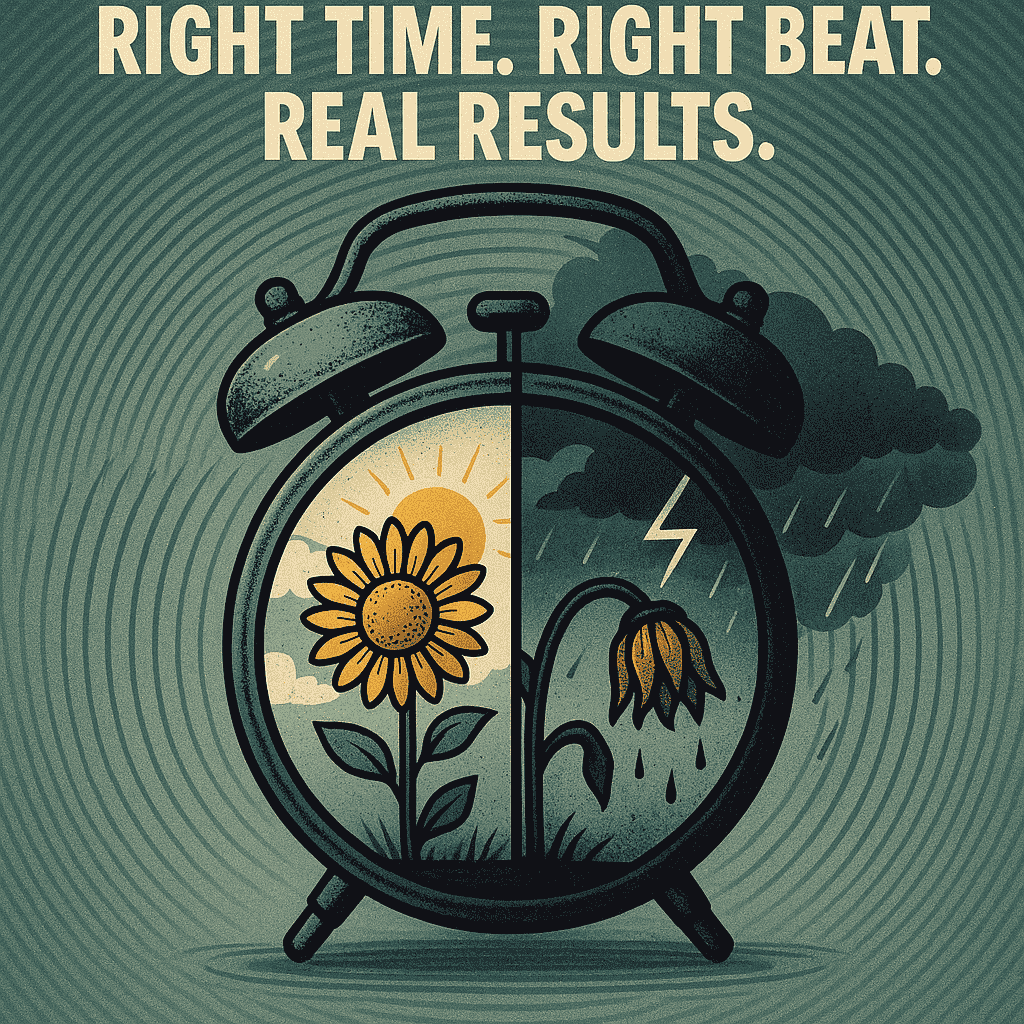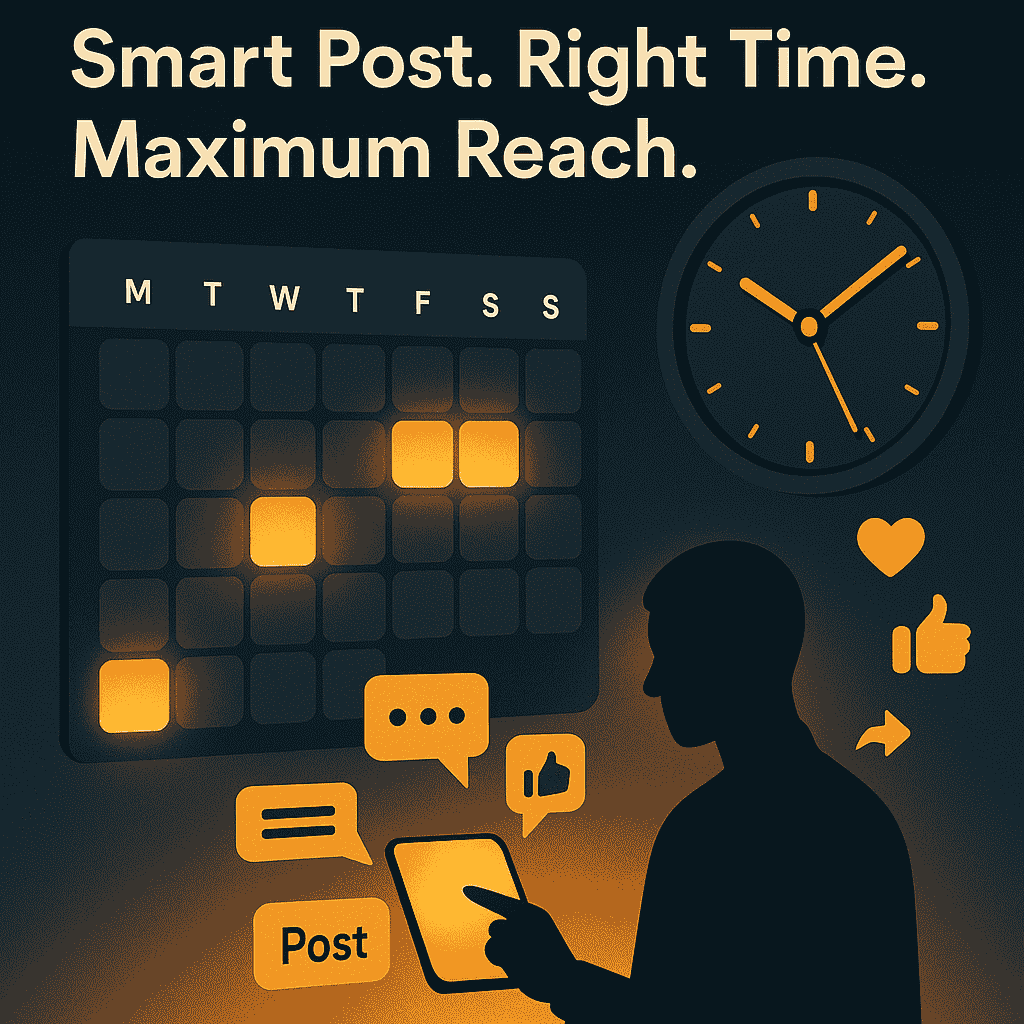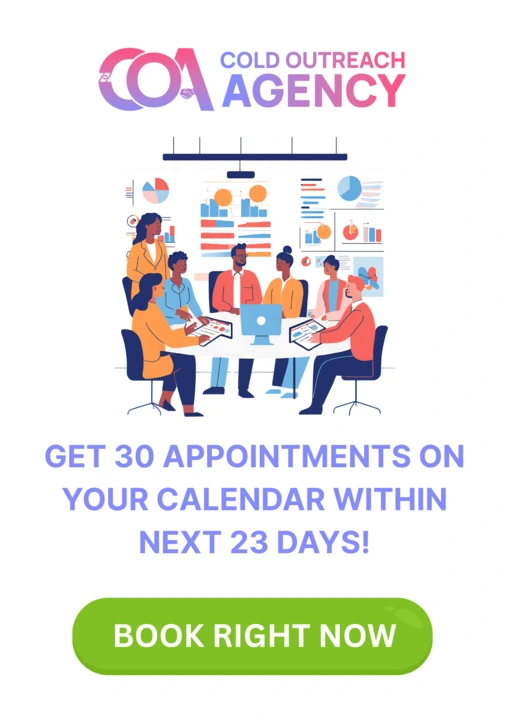Let me be brutally honest with you—most people post on LinkedIn like they’re throwing spaghetti at the wall and praying something sticks.
They post randomly. Inconsistently. And without any understanding of timing or frequency.
And then they complain LinkedIn doesn’t work.
But here’s the reality: LinkedIn works insanely well for B2B lead generation—when you understand the mechanics. And one of the most critical mechanics that separates amateurs from pros is timing and frequency.
I’m not talking about vague advice like “post in the mornings” or “be consistent.” I mean knowing exactly when and how often to post so you’re not just generating engagement… but booking real sales meetings.
Let’s break it down like I would if I were building a posting calendar for a client from scratch.
Why Timing and Frequency Matter (Way More Than You Think)

Before I give you the exact best times and posting schedules, let’s clarify one thing: LinkedIn is not Instagram.
Your audience isn’t endlessly scrolling for entertainment. They’re scrolling between sales calls, before meetings, while waiting for coffee, or during their train ride.
That means their time, attention, and mindset are different. You need to post when they’re actually in professional mode, not “Netflix and chill” mode.
Timing matters because:
LinkedIn’s algorithm rewards early engagement
If you post when no one’s around, your content dies in the feed
The first 60–90 minutes after posting determine how far it spreads
And frequency?
The Best Days to Post on LinkedIn
Let’s get straight to it.
Based on real data, campaign experiments, client dashboards, and what we’ve personally done inside my cold outreach agency, here are the best-performing days for B2B content on LinkedIn:
Best Days: Tuesday, Wednesday, Thursday
These mid-week days dominate for B2B engagement.
Why?
Because Monday is chaos, people are catching up on emails, planning the week, or mentally recovering from the weekend. Friday? Everyone’s mentally clocked out by lunchtime.
Midweek is when your audience is focused, structured, and engaged with valuable content.
Want to test it? Try posting a high-value carousel or text post on a Wednesday morning. You’ll see the difference.
Okay-ish Days: Monday and Friday
If you must post on Monday, aim for late morning or post-lunch.
Worst Days: Saturday and Sunday
Look—I don’t care what some guru says about weekend hacks. Let’s talk specifics. Here’s what I’ve seen work time and time again across multiple B2B industries.
Best Performing Time Slots:
7:30 AM – 9:00 AM (Local Time)
The “commute scroll” or “coffee scroll.” Decision-makers are checking LinkedIn before diving into work.
11:00 AM – 12:30 PM
Mid-morning lull. Great time to grab attention before lunch hits.
2:00 PM – 3:30 PM
The post-lunch dip. People need a mental break and often check LinkedIn during this window.
4:30 PM – 6:00 PM
Especially effective for founders, marketers, and consultants winding down the day.
Avoid Posting Between:
12:30 PM – 2:00 PM (Lunch = less engagement)
6:30 PM – 9:00 PM (Netflix mode begins)
After 9:00 PM (It’s a ghost town)
Now, a key point: Post in your audience’s time zone, not yours. If your ICP is in New York but you’re in India, schedule your content accordingly using tools like Taplio, Buffer, or Shield.
How Often Should You Post on LinkedIn?
Here’s where most people mess up.
They either:
Post once every 2 weeks and expect miracles, or
Burn themselves out posting every day and give up in 2 weeks
3–5 times per week is the sweet spot.
Here’s how I break it down:
Day: Post Type
Monday: Quick win, listicle, or short tip post
Tuesday: Deep value post (carousel/text format)
Wednesday: Personal story + business lesson
Thursday: Call-to-action (eg, “DM me for…” post)
Friday: Light, humorous, or contrarian insight
If you’re just starting, begin with 3x/week, then scale to 5x as you get faster.
Posting daily is possible—but only if you batch your content or have a content repurposing system (which, if you’re running B2B outreach like I do, you should have).
Does Time and Frequency Impact Lead Generation?
Let me share what I’ve seen firsthand.
When I adjusted my own content strategy to post at peak times and increased my posting frequency from 2 to 4 times per week, my inbound leads tripled in 60 days.
Clients booking 15–25 qualified meetings per month from LinkedIn alone saw the same pattern:
Engagement was just the first signal.
But what moved the needle was being consistently top of mind during working hours.
It’s not just about likes or impressions—it’s about being remembered when your ideal client thinks, “I need help with X.”
That only happens when they see you regularly, and when your post shows up while they’re in business mode—not at 11 PM while watching Netflix.
How to Build Your LinkedIn Posting Calendar
I’m going to make this dead simple for you.
Here’s how I create a weekly LinkedIn calendar for B2B lead gen:
Step 1: Pick Posting Days
Add Monday or Friday if you’re ready.
Step 2: Choose Your Time Slot
For most of my clients, we post at 8:00 AM or 11:00 AM in the target audience’s time zone. Test and adjust if needed.
Step 3: Assign Content Types
Tuesday: Educational or myth-busting post
Wednesday: Personal story with business lesson
Thursday: Soft pitch or CTA (“DM me…” or “Comment ‘guide’…”)
Friday: Contrarian take, light humor, or recap post
Step 4: Batch Your Content
Create all posts for the week in one sitting. Tools like Taplio or Notion help you store, draft, and schedule with ease.
A Few More LinkedIn Timing & Posting Tips That Work

1. Don’t Post Back-to-Back
Give at least 18–24 hours between posts. If you post too close together, LinkedIn throttles your visibility.
2. Avoid Edits in the First Hour
If you make changes right after posting, the algorithm can tank your reach. Triple-check before hitting publish.
3. First 60 Minutes Matter Most
This is the “golden hour” for engagement. If your post gets solid traction early (likes, comments, saves), LinkedIn pushes it harder.
4. Signal the Algorithm Early
Have 2–3 people from your team (or even just friends) engage with your post within 5–10 minutes. It helps boost visibility.
Conclusion
So, yes—optimize your timing and frequency. But also:
Post with clarity, not confusion.
Solve real problems your ICP cares about.
Be human, not robotic.
Mix value, storytelling, and soft CTAs.
When you combine all that with the right timing and frequency? That’s when LinkedIn becomes your B2B appointment-setting machine.
Conclusion (1000 Words): Why This Timing and Frequency Strategy Will Keep Working Long-Term
I want to leave you with this: algorithms change, but human behavior doesn’t.
People will always have patterns:
They start their day by checking updates.
They get tired mid-morning and scroll again.
They look for distractions after lunch.
They mentally wind down by 5 or 6 PM.
When you understand this natural rhythm and sync your content to it, your visibility skyrockets. Your lead gen becomes consistent. And your content doesn’t get lost in the noise—it becomes a magnet.
But it’s not just about hacking attention. It’s about building familiarity, authority, and trust.
When you show up 4–5 times per week, at the right times, with the right message:
You get more profile visits.
More connection requests.
More DMs saying “Hey, I saw your post about X—can we chat?”
And that’s when LinkedIn becomes more than a branding tool. It becomes your daily sales engine.
Now, whether you’re a solopreneur, a SaaS founder, or running a full-fledged agency, you can control your lead flow with content.
But only if you stop guessing and start posting with a data-backed strategy that works.
So if you’ve been wondering why your content isn’t converting…
Let me make one thing crystal clear: B2B lead generation on LinkedIn isn’t about luck. That alone can radically change the kind of visibility and pipeline you create on LinkedIn.
You don’t need to go viral.
You don’t need to post daily forever.
And you sure as hell don’t need to stress over the algorithm every day.
What you do need is a system:
A posting calendar based on proven time slots.
A content structure that solves problems, tells stories, and builds trust.
A frequency rhythm that keeps you top of mind without overwhelming your feed.
Frequently Asked Questions
Q1. What are the suitable hours for LinkedIn posting, for B2B lead generation, in 2025?
In 2025, suitable times for LinkedIn posting for B2B lead generation are generally Tuesdays to Thursdays, 9 AM to 11 AM within the target audience’s time zone. These time slots succeed in obtaining a lot of engagement with decision-makers and professionals.
Q2. How many times should I post on LinkedIn for sustained B2B lead generation?
To generate leads, posting 3 to 5 times per week is encouraged. An important factor, however, is consistency, which translates into visibility and trust for your audience with time.
Q3. Do leads increase by daily posting on LinkedIn?
Visibility is good with daily posting, but it just doesn’t matter that much compared to the quality and relevance of content. If your value-driven posts work well for you daily, then go on. But for most B2B companies, 3 to 4 really good posts a week will work better for leads anyway, and they won’t clutter their audiences
Q4. Can I post on weekends for LinkedIn lead generation in 2025?
Weekends are pretty much slow for engagement for B2B, although Sunday evening from 6 to 8 PM can be considered perfect for some soft personal storytelling or behind-the-scenes content to humanize your brand and nurture

